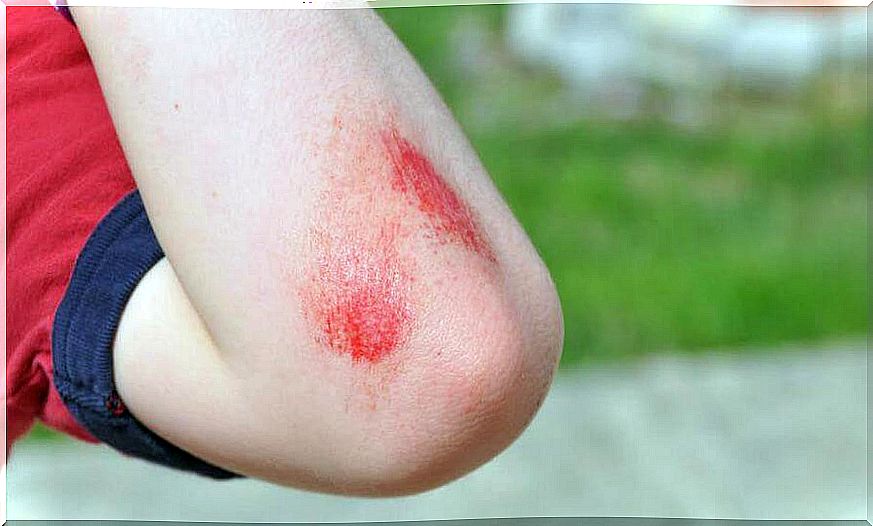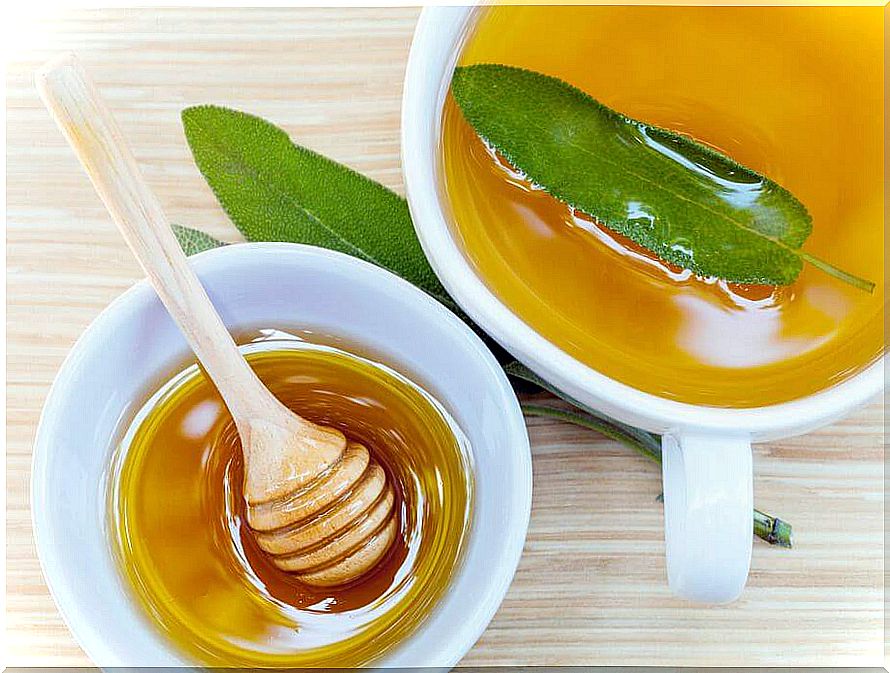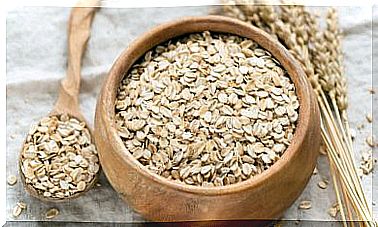Sage And Honey Preparation To Treat Cuts And Scrapes
There are several methods of treating cuts and scrapes, depending on how bad they are. Often when the skin is kept clean and the wound is superficial, the healing process takes place on its own. However, to speed up this process, you can try some natural remedies.
Some naturally-derived ingredients, such as sage and honey, have antiseptic and antimicrobial properties that help protect the skin against infection. In addition, both contain antioxidants and essential nutrients that aid healing. Find out how to use them.
Sage and honey to treat cuts and scrapes
Cuts and scratches occur when one of the skin’s surface areas is damaged or abused. These often cause bleeding, redness, and pain. They can also become infected and cause other symptoms such as pus and swelling. However, with proper intervention, its healing process is quick and does not usually cause complications.
Fortunately, several treatment options are now available to protect the skin when these superficial injuries occur. Although many options are pharmaceutical, there are also preparations of natural origin that can be very useful.
This is the case of a home remedy of sage and honey, recognized for its antiseptic and healing capacity. Their combination offers a different alternative to disinfect the affected skin, minimizing the risk of infections. It also helps soothe irritation and swelling around the wound.

Benefits of sage to treat cuts and scrapes
Sage is one of the medicinal plants that can help treat cuts and scrapes thanks to its antiseptic and antimicrobial properties. Since ancient times it has been used in natural medicine for its ability to prevent the growth of bacteria and other pathogenic microorganisms.
When used externally, it contributes to the relief of skin wounds, not only reducing the risk of infections in exposed areas, but also helping to regenerate tissues for optimal healing.
Benefits of honey to treat cuts and scrapes
Organic honey is one of the most popular ingredients in terms of alternative remedies for treating cuts and scrapes. Due to its antibiotic, antifungal and antiseptic properties, it is an excellent option to prevent and treat infections.
On the other hand, its topical use benefits the health of the skin, since it is moisturizing and helps to regenerate those tissues that suffered attacks due to a wound. In fact, it is soothing and reduces discomfort such as burning, stinging and pain.
How to make the sage and honey preparation?

The preparation of this natural remedy to treat cuts and scrapes is quite simple. In addition, its ingredients are easy to buy both in supermarkets and in herbal stores. The most important thing is to acquire 100% organic honey, since other varieties do not have the same nutritional quality and properties.
Ingredients
- 2 tablespoons of dried sage powder (30 g)
- 4 tablespoons of organic honey (60 g)
Utensils
- A sterile vial
- A wooden spoon
Preparation
- To start, crush several dried sage leaves into a fine powder. If you prefer, check with your herbalist for powdered sage extracts.
- Next, pour the sage powder into a previously sterilized jar.
- Next, add the tablespoons of honey and mix using a wooden spoon.
- When the mixture is ready, cover it and leave it in a cool, dark place for 24 hours.
- After this time, start using it.
Application mode
- Clean the surface of the wound well and apply the sage and honey remedy.
- Massage gently and let it work for 20 to 30 minutes.
- When this time elapses, rinse with lukewarm water.
- Repeat its application 2 or 3 times a day, until the skin recovers completely.
Caution: Avoid using this remedy if the cut or scrape is open. Keep in mind that serious injuries should be treated by a professional, as soon as possible. So, if at first glance it is severe, consult immediately.
Do you already have this remedy in your medicine cabinet? Now that you know how to prepare it, make sure you have it on hand to heal those minor wounds. Keep in mind that the preparation can last a month or two if stored in the refrigerator or a cool place.









